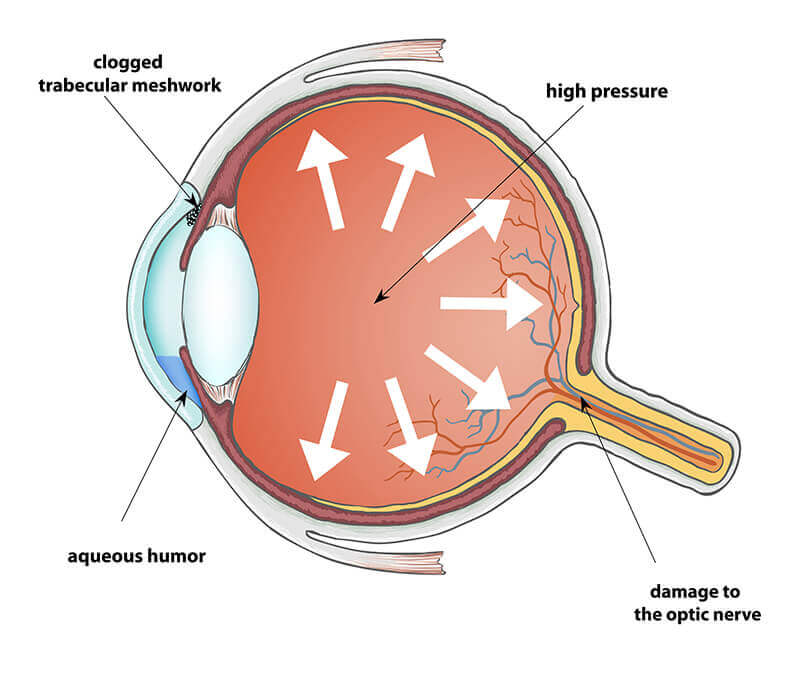Glaucoma is one of the leading causes of blindness in the U.S. It occurs when normal eye fluid fails to properly drain, and pressure builds up inside the eye. As the pressure rises, the optic nerve can be damaged resulting in a gradual loss of vision. If left untreated, glaucoma may eventually lead to blindness.
Because the early symptoms of glaucoma often go unnoticed, regular eye exams for early glaucoma detection are essential, especially for people with a family history of glaucoma and/or diabetes.

Glaucoma can be divided roughly into two main categories: “open angle” or chronic glaucoma and “closed angle” or acute glaucoma. Acute glaucoma appears suddenly and often with painful side effects. While it is usually quickly diagnosed, damage and loss of vision can suddenly occur. Open-angle, chronic glaucoma tends to progress more slowly so the patient may not notice, until the disease has significantly progressed. Symptoms may include pain in or behind the eyeball, headache, and sensitivity to light.
The biggest challenge with glaucoma is that there are no clear early warning symptoms. As the disease progresses, the field of vision begins to narrow. Often patients can still see what is directly in front of them but lose their peripheral (side) vision. Untreated, glaucoma will eventually erode the central vision as well, which is why early diagnosis is so important.

Risk factors for glaucoma include age (everyone over 60 should be checked during their annual eye exam), diabetes, and family history. African-Americans are particularly susceptible to glaucoma and should receive regular glaucoma exams beginning at age 40.
Glaucoma can be treated with medications, eye drops, or surgery.
What to Expect at Your Appointment
Our experienced ophthalmologists work with you to evaluate the severity of your glaucoma and will recommend a personalized treatment plan. During your initial appointment, a trained technician will perform several diagnostic tests. These may include:
- A standard eye chart test to measure visual acuity
- A visual field test to measure peripheral vision
- A tonometry test that measures the pressure in the eye
- An OCT (optical coherence tomography) test performs cross-sectional imaging using light to measure layers of the retina and optic nerve in order to detect changes in pathology
- A corneal pachymetry test will measure the thickness of the cornea
- Pupil dilation, which increases the size of the pupil and allows for assessing the health of the entire eye
When you visit RGB Cataract and LASIK, our friendly and caring staff goes above and beyond to help make you as comfortable as possible during your appointment.
Contact Us Today For More Information
RGB Cataract and LASIK is conveniently located off Highway 75 North in Sherman, Texas. Call 903-892-3282 to schedule an appointment.
RGB Cataract and LASIK. For the treatment you and your eyes deserve.






